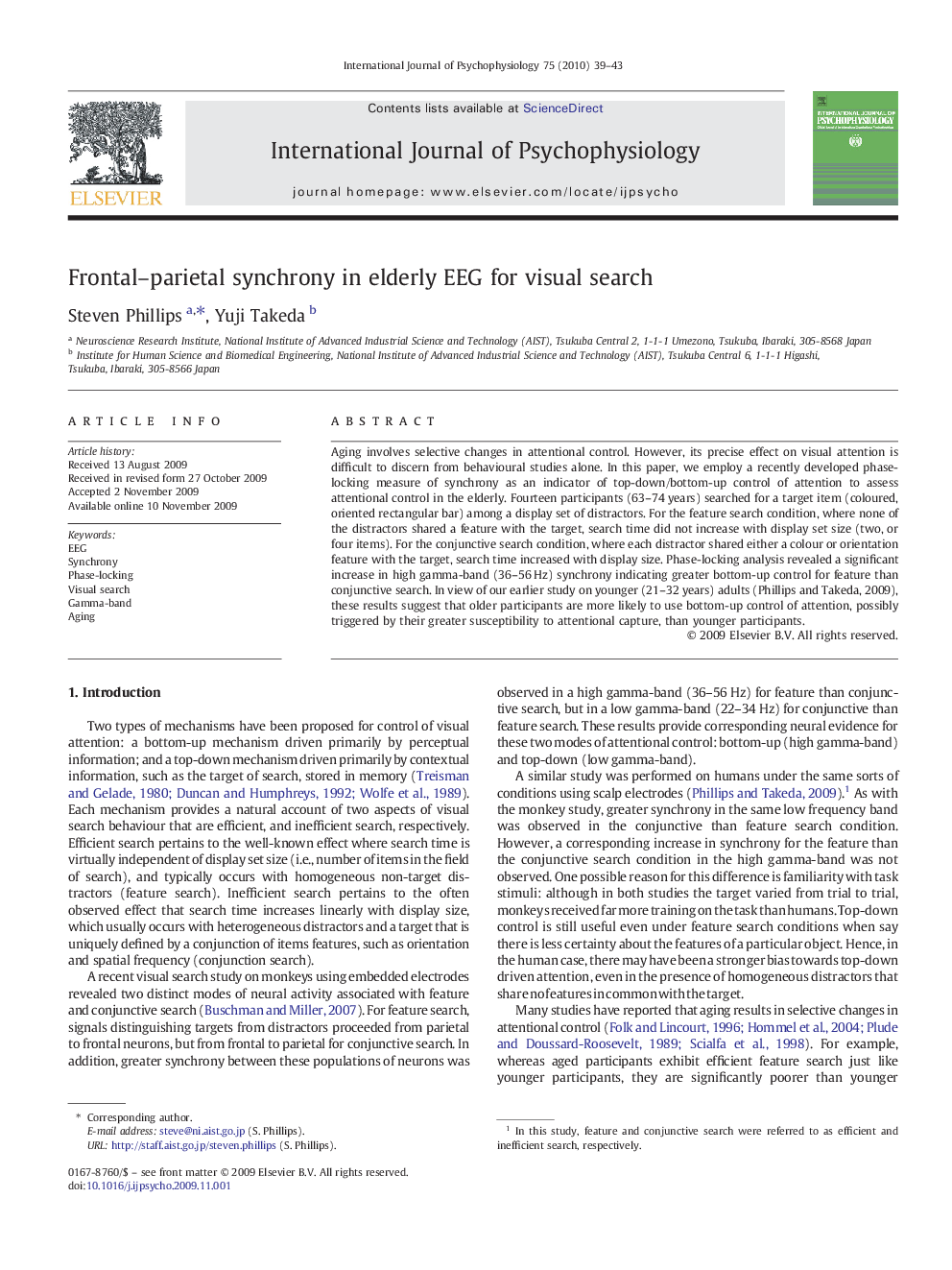| Article ID | Journal | Published Year | Pages | File Type |
|---|---|---|---|---|
| 930637 | International Journal of Psychophysiology | 2010 | 5 Pages |
Aging involves selective changes in attentional control. However, its precise effect on visual attention is difficult to discern from behavioural studies alone. In this paper, we employ a recently developed phase-locking measure of synchrony as an indicator of top-down/bottom-up control of attention to assess attentional control in the elderly. Fourteen participants (63–74 years) searched for a target item (coloured, oriented rectangular bar) among a display set of distractors. For the feature search condition, where none of the distractors shared a feature with the target, search time did not increase with display set size (two, or four items). For the conjunctive search condition, where each distractor shared either a colour or orientation feature with the target, search time increased with display size. Phase-locking analysis revealed a significant increase in high gamma-band (36–56 Hz) synchrony indicating greater bottom-up control for feature than conjunctive search. In view of our earlier study on younger (21–32 years) adults (Phillips and Takeda, 2009), these results suggest that older participants are more likely to use bottom-up control of attention, possibly triggered by their greater susceptibility to attentional capture, than younger participants.
